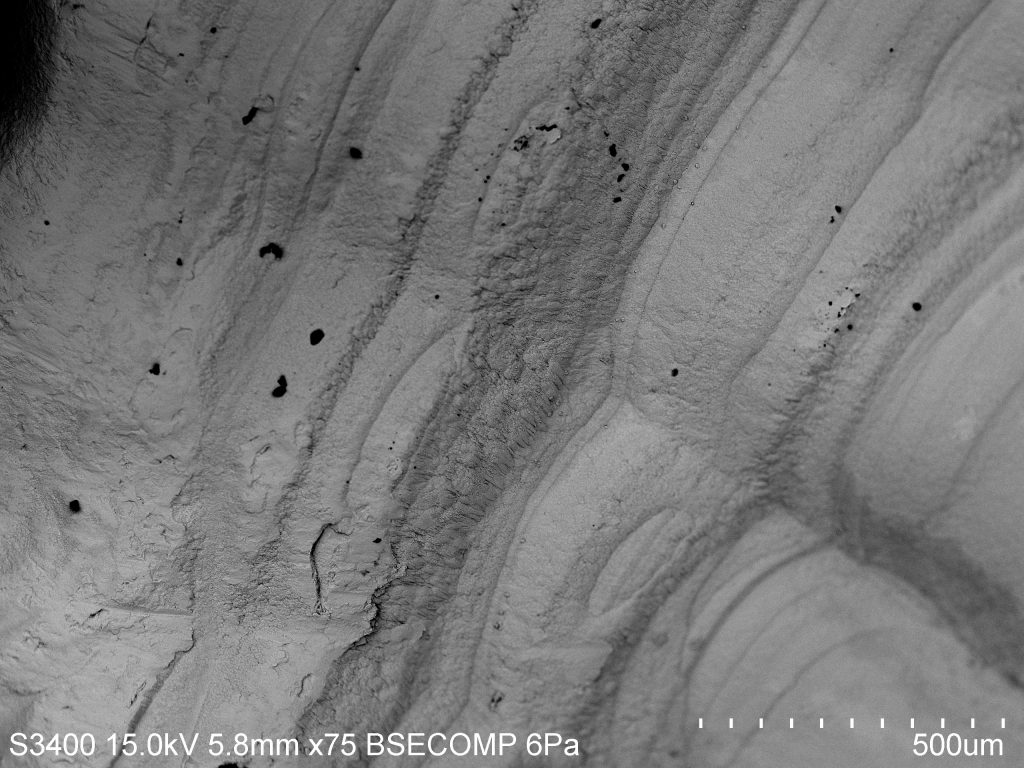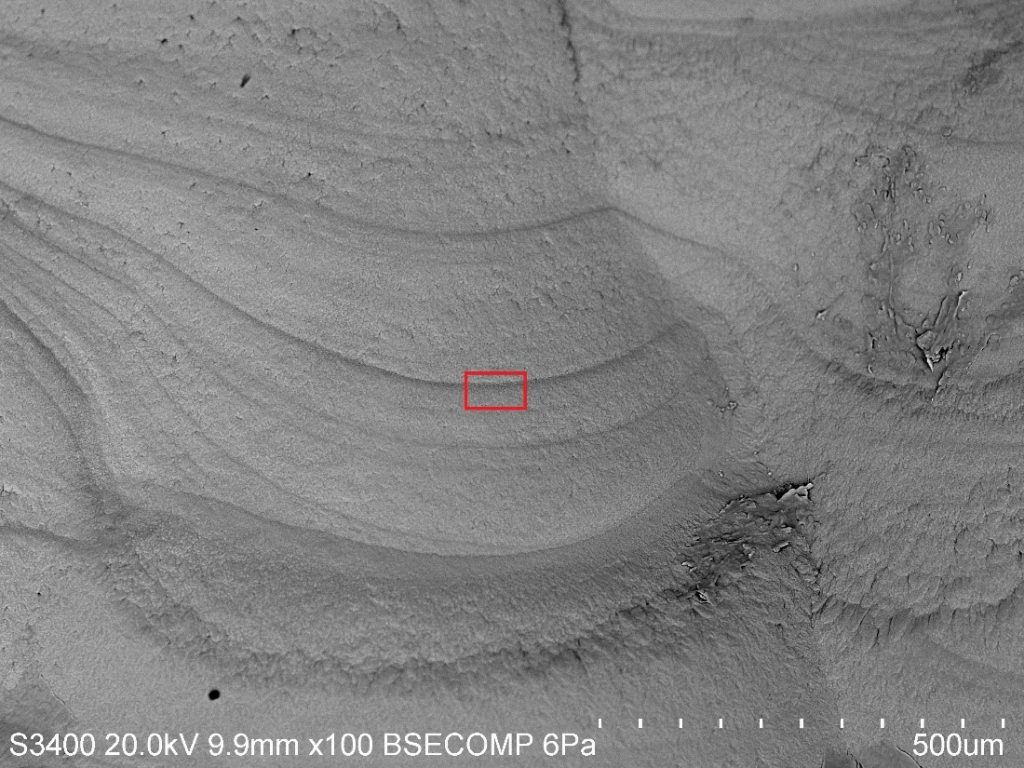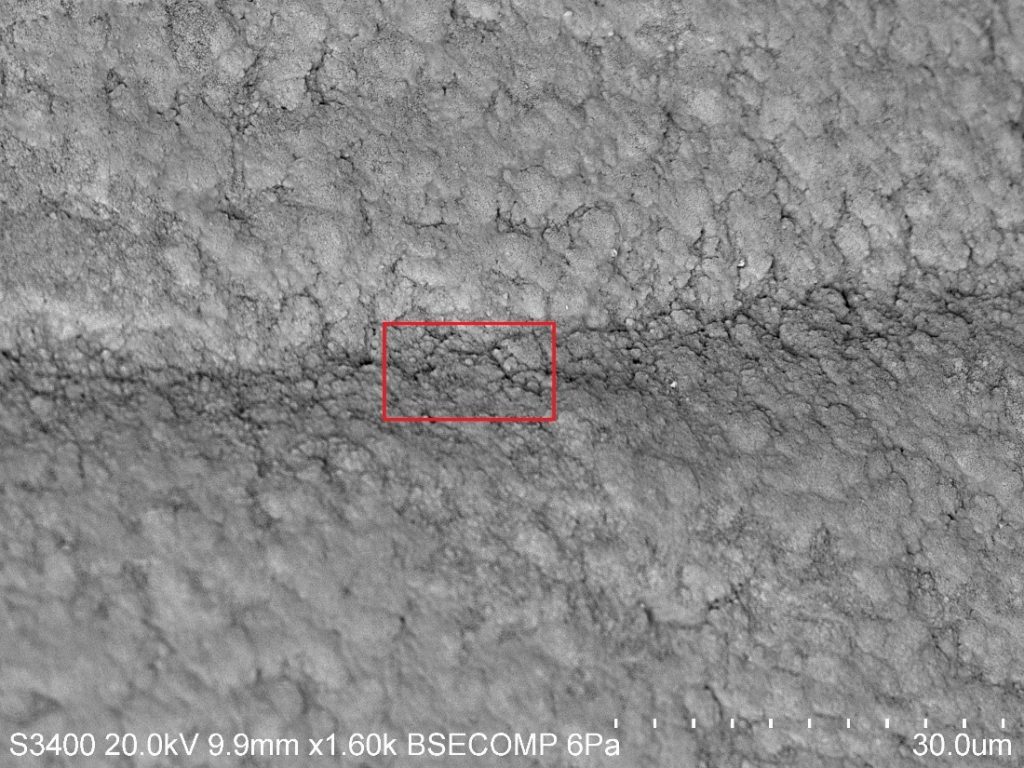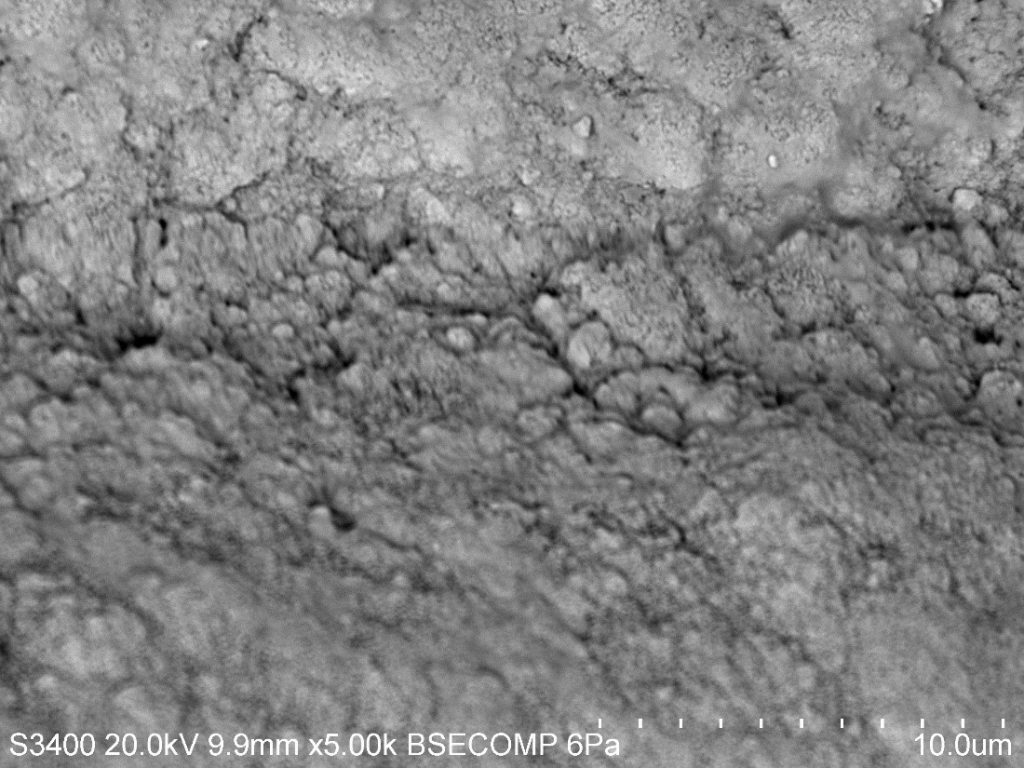On the first day of our Scanning Electron Microscopy class our instructor asked if we would like to prepare a sample for the following week. I initially didn’t have a clue on what I wanted to use because I had not prepared any sample of my own to go through the process to be prepped for the SEM. While I was waiting and thinking about what I wanted to use, I realized that I had a pair of otoliths in my backpack. These otoliths were collected from a rock fish during a series NOAA surveys conducted off the West Coast of the U.S. I had them as mementos of the trip I was on and forgot about them for a couple of months and I thought this would be a great opportunity to look at one of them under a high powered microscope.
Otoliths are boney structures located behind the brain of fish and come in different shapes and sizes. Otoliths are not found in cartilaginous fish like sharks, skates, rays and chimaeras and are predominantly in bony fishes. These hard structures are made of calcium carbonate and aid fish in detecting balancing, and directional movement. Scientist can use these structures to identify species, calculate growth rates, and determine the age of the fish. This is made possible because during the lifespan of these fish proteins and calcium carbonate layer on top of each other annually.
(Picture 1) A comparison in size of an otolith and a penny. Although it’s coated in a thin layer of gold you can see the distinct bands that surround the otolith. These distinct dark “rings” are made of calcium carbonate and proteins, are commonly used to age fishes. This technique is analogous to counting the rings of a tree to determine the age but I was curious to see if there was physical difference between the bands or if it is just a difference in color. When we actually looked at the otolith it almost looked like the surface of a planet. Some areas of the otolith looked like canyons and it was interesting seeing how distinct the bands looked compared to the lighter areas of the otolith. When we looked even closer it seemed that there was a courser texture in the bands than areas without it and the structures were smaller. I thought it was an interesting thing to see not only that there is a color difference but a physical difference in a micro scale.
(Picture 4) The structures in the band almost mirror the structures on the light side but are smaller and more compact.






